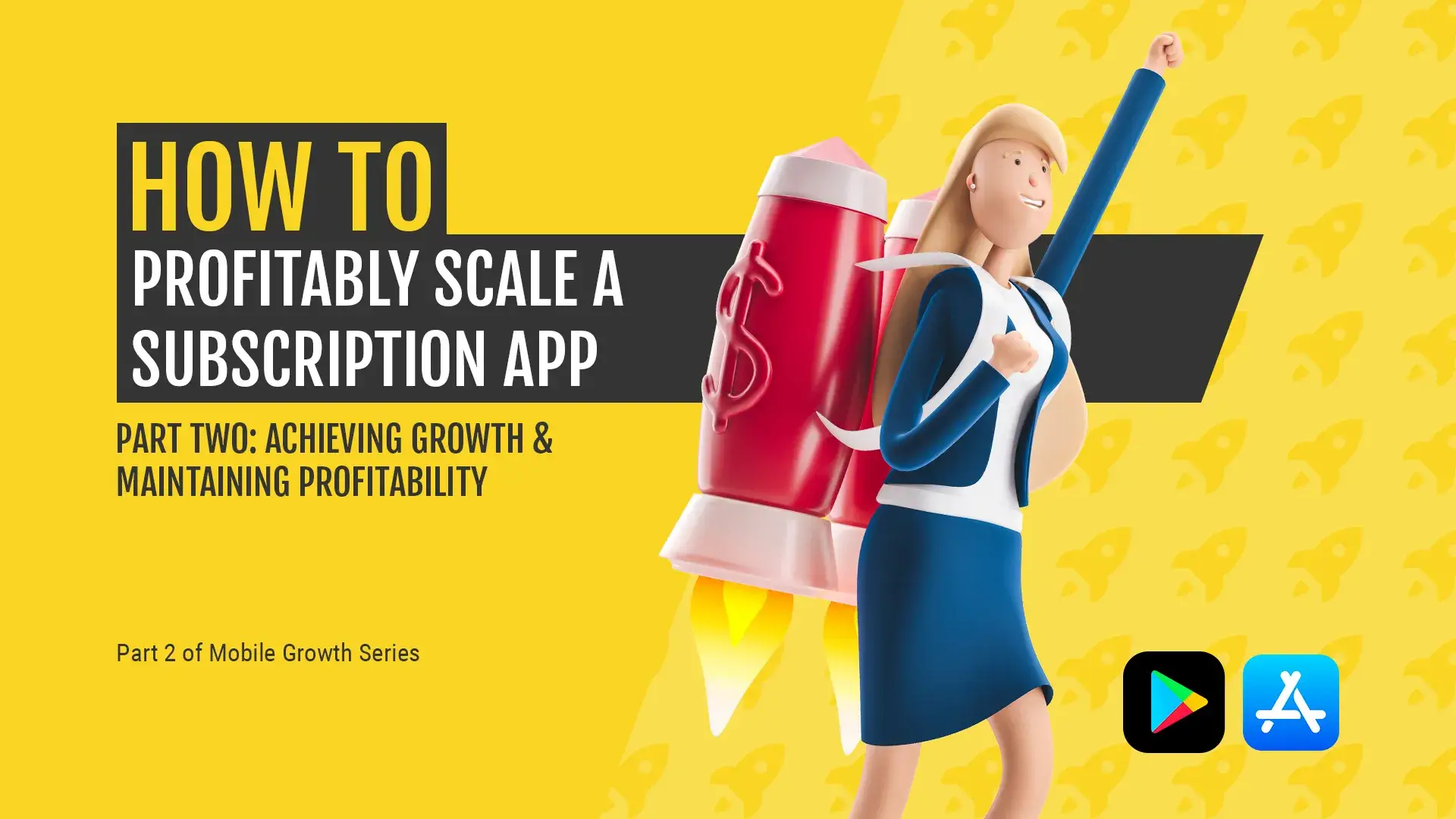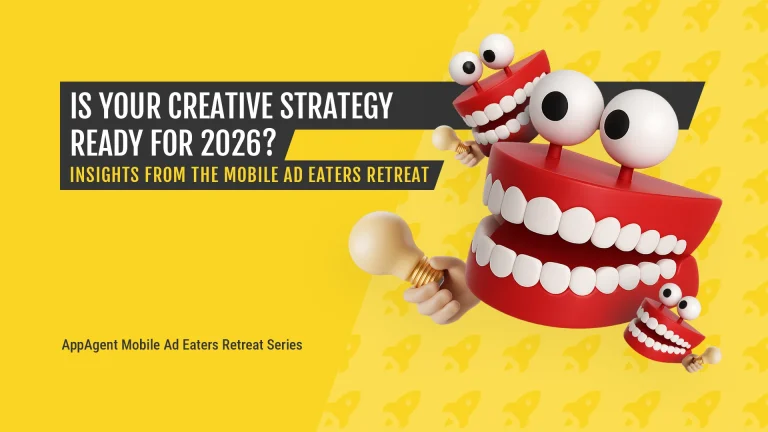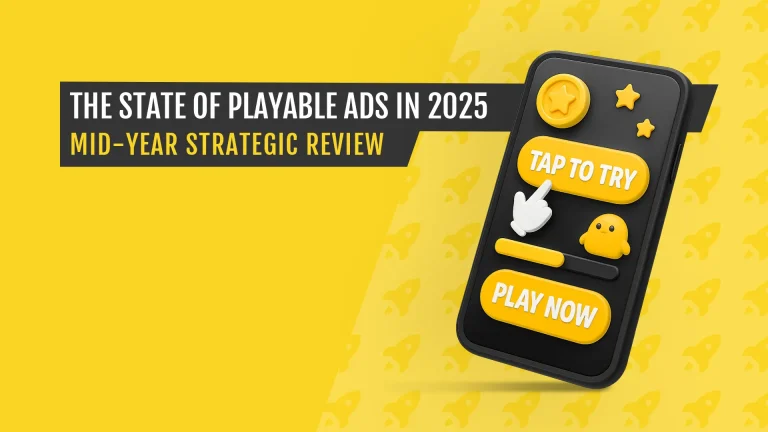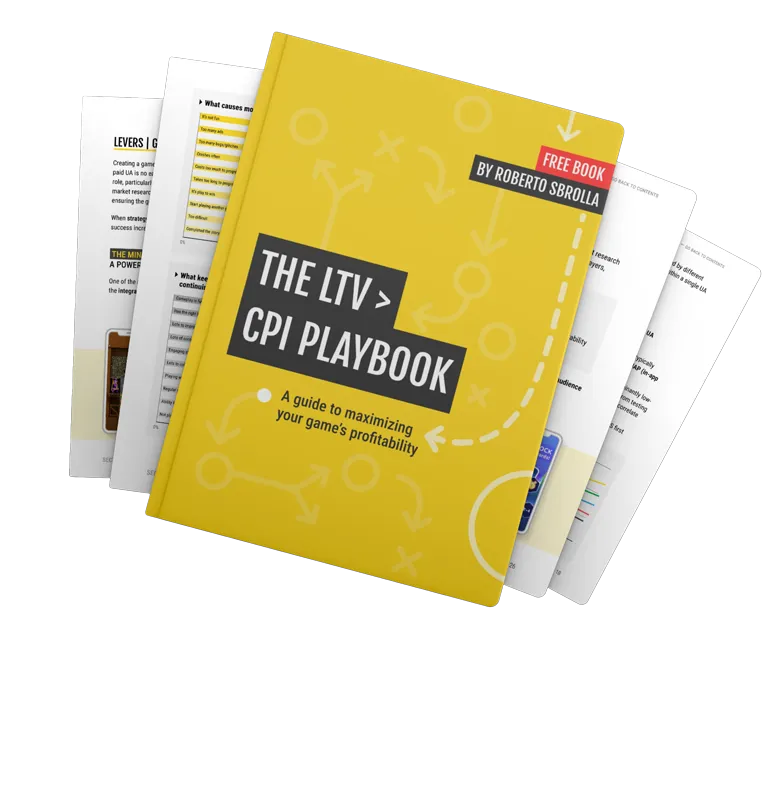This is the second part of the Mobile Growth Series, which aims to help you take your subscription app to the next level, achieve growth, and maintain profitability. In each episode, we will provide insights into topics related to data, product optimization, and growth strategy. Subscribe to our newsletter to stay updated about future episodes.
If you haven’t already, head to Part One of this article to learn if your subscription app is ready to scale.
You can’t grow without a good cost/revenue structure. For early-stage apps, you need to show numbers that are good enough to convince investors and lead your business to the next investment round. Whether your company is a startup or a scale-up, the numbers need to lead to profitability in order to thrive.
What you will learn in this article:
- How to calculate the profitability of a subscription app
- How to use the day-zero opportunity to find profitability ASAP
- Three tips for improving conversion rate
How to Calculate Profitability for a Subscription App
Because we are going to talk about money, we can’t skip doing a bit of math. Let’s start by considering a standard formula to measure ROAS (Return On Ad Spend) for subscription apps.
This is calculated by dividing LTV (Lifetime Value) by the CPA (Cost Per Action = Cost Per New Subscription in this case). We’ll cover all of these parameters in detail below.

NOTE: In the formula, you can see D(x) beside ROAS and LTV. This is the way to consider at what moment in time we calculate the ROAS and the LTV. It’s a way to consider how many days of accumulated revenue we want to use to capture a photo of the situation.
Subscription apps do in fact have to consider recurring revenue, and a good starting point for the ROAS calculation is to consider 395 Days (13 months). In this way, you can take into account a more interesting LTV for all yearly subscription renewals that are going to happen only after 365 days.
Despite this being a good solution, you should always consider the peculiarities of your business when setting your D(x). Depending on your business model, strategy or amount of cash in the bank, you may have a shorter or longer payback time.
One very interesting change that we can do to our formula is to convert the CPA (Cost per New Subscription) to a more convenient representation. By doing some calculations, we can write that CPA is actually equal to CPI (Cost Per Install) divided by the Conversion Rate from Installs to Subscriptions.

Example: If we have a CPI of $6 for the US market and a conversion rate of 3% from Installs to Subscription, our CPA will be equal to $200 (full calculation: $6/0,03 = $200).
NOTE: it’s very important to have good benchmarks and always have these metrics in mind. Especially at the beginning when you don’t have data, benchmarks can help you do the initial estimations, or if you want to understand what your realistic margin of improvement is on CPI, Conversion Rate, and LTV by doing product optimization or paid marketing activities. This is where agencies like AppAgent can help using their experience working with apps in a similar category to yours.
Below you have our updated formula.

Why is this new representation so useful? Because it gives us the opportunity to see where we can act on improving the results of the formula (ROAS) and to what we could/should give priority.
CPI (Cost per Install)
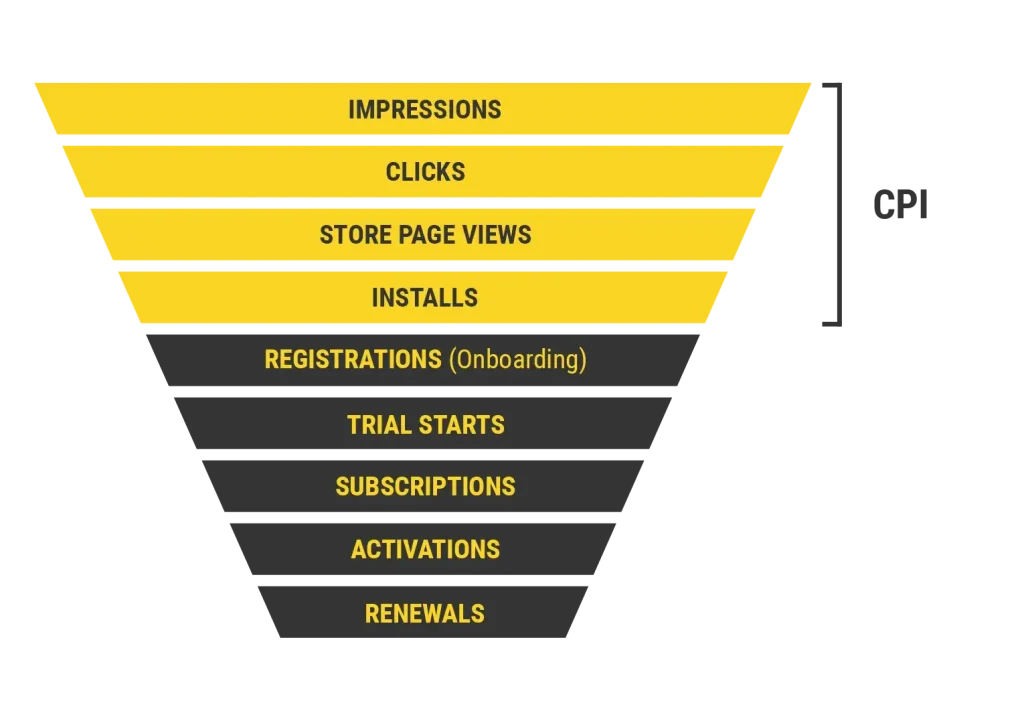
Here’s what to consider:
- It’s a function of top-funnel metrics: CPM and CTR.
- The more you grow, the more the CPI tends to flatten or increase.
- The challenge is to keep the CPI reasonably low while scaling.
- Good creative strategy and production is necessary to reach high CTR and keep CPI as low as possible (as you can’t influence CPM) .
- CPI also depends on the platform (iOS/Android), geo, advertising channel, and seasonality.
If you don’t control the CPI that much (too many external factors and more a given value in the short term), then how about focusing on the Subscription Conversion Rate (Installs to Subscriptions) to lower the CPA and find better profitability?
Conversion Rate (Installs to Subscription)
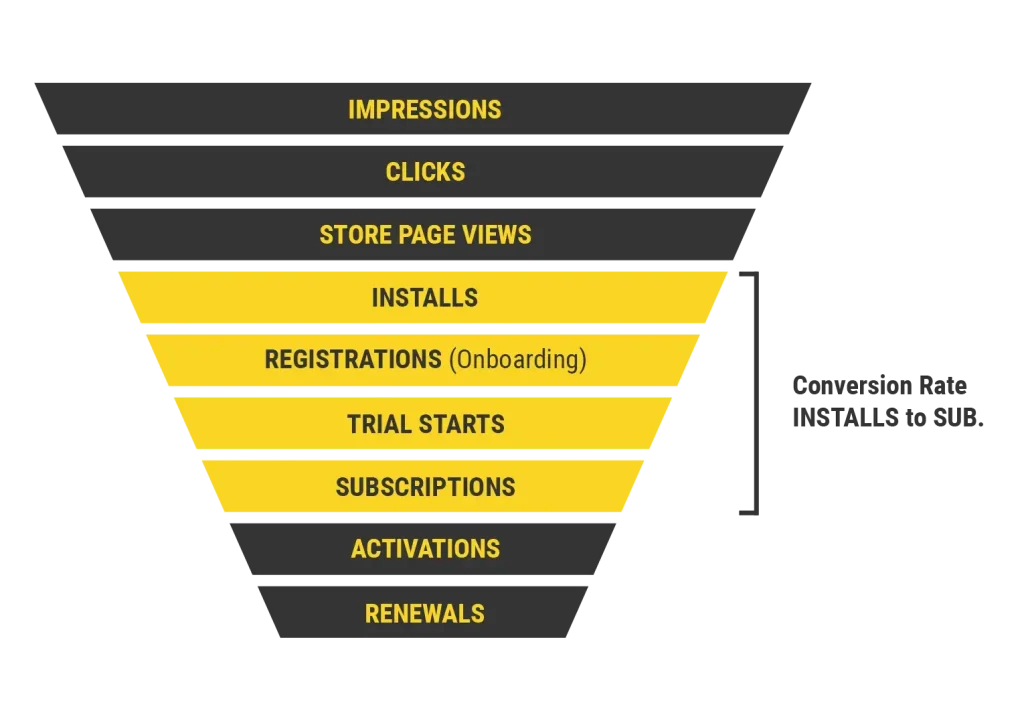
Here’s what to consider:
- High intent of the user after install.
- It depends a lot on your onboarding and paywall, two critical conversion points.
- It also highly depends on your USP and Positioning (aka perceived value by the user).
Because you “own” onboarding and paywall, and it’s relatively easy to work on them with either Firebase Remote Config or external tools like Adapty or Purchasely, there is a good opportunity to improve them and find a real impact on CPA. Often times it’s way bigger than what you can achieve at the top of the funnel with your ads and store conversion optimization.
LTV (Lifetime Value)
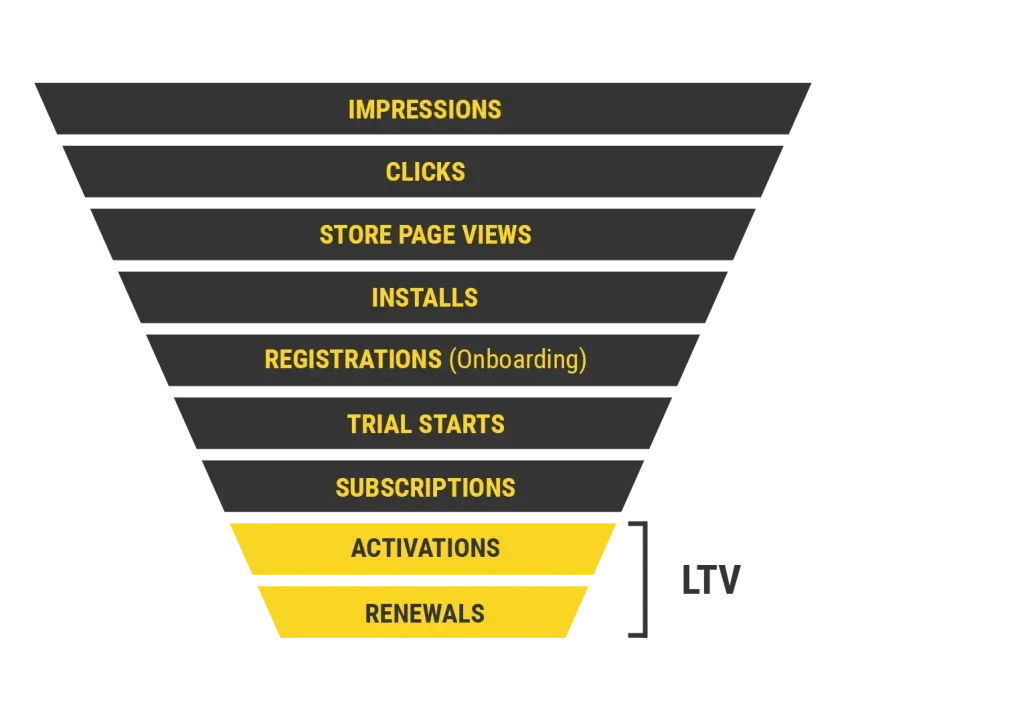
What to consider:
- It takes time to improve it (time = lots of development = high cost).
- It’s difficult to get it right (a lot of business and product decisions are involved).
- It depends on the retention rate, pricing plans, and prices.
Conclusion about Subscription App Growth & Profitability Parameters
Out of the three parameters (CPI, LTV, Conversion Rate Installs to Subscriptions), there’s one that you should focus on in the short term to find profitability ASAP: Installs to Subscriptions Conversion Rate.
Why? Because you own the two most important levers to impact it: onboarding and paywall. If you can improve it, your chances to succeed can really change overnight.
Let’s check the two scenarios below.
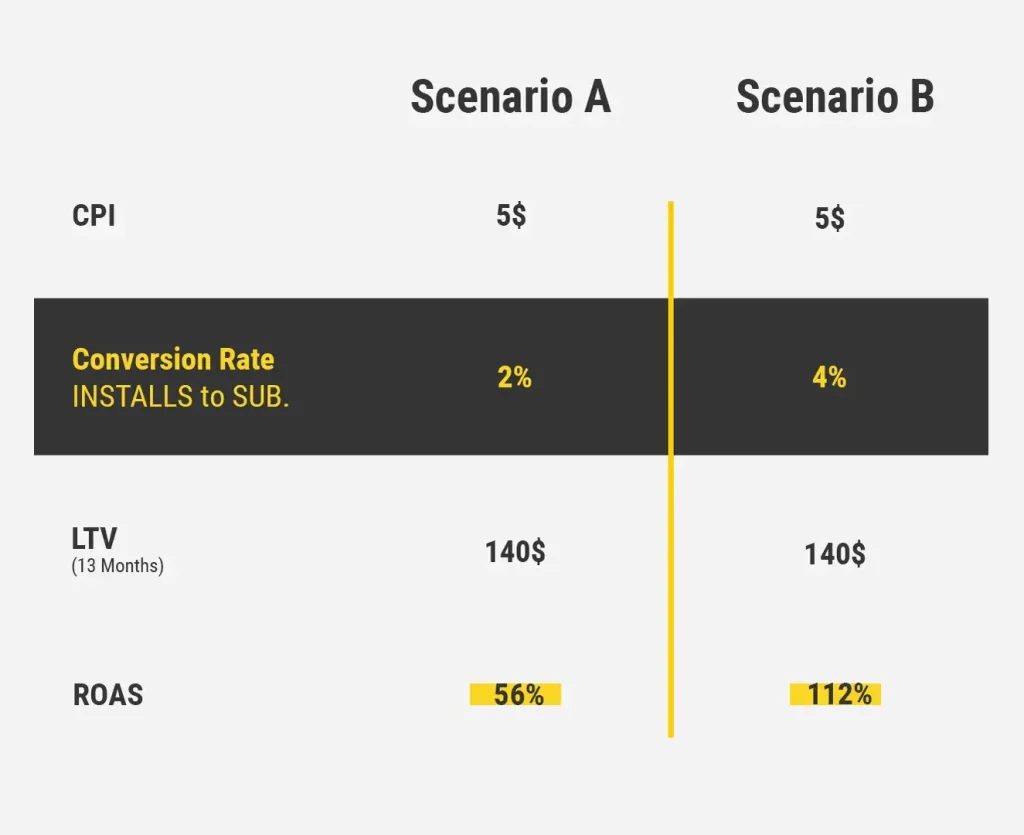
What we can see clearly in the table is that in Scenario A, we are not profitable (56% ROAS). If all of the other parameters stay the same but we manage to improve the Conversion Rate Installs to Subscriptions from 2% to 4% on Scenario B, we suddenly have a profitable business (112% ROAS).
As commented above, for this example we are considering a 13-month timeframe, or D(x), to calculate our LTV and ROAS.
There is another fundamental reason to invest in improving Installs to Subscription Conversion Rate. You may not be aware of it, but most of the users paying for a subscription are actually doing it before even testing the product itself. Without doing any spoilers yet, this means that you have a great opportunity that comes already on day zero (the same day you install the app).
The “Day-Zero Opportunity” and How to Find Subscription App Profitability ASAP
This is what the Director of User Acquisition for the #1 fasting app in Germany is saying about this topic:
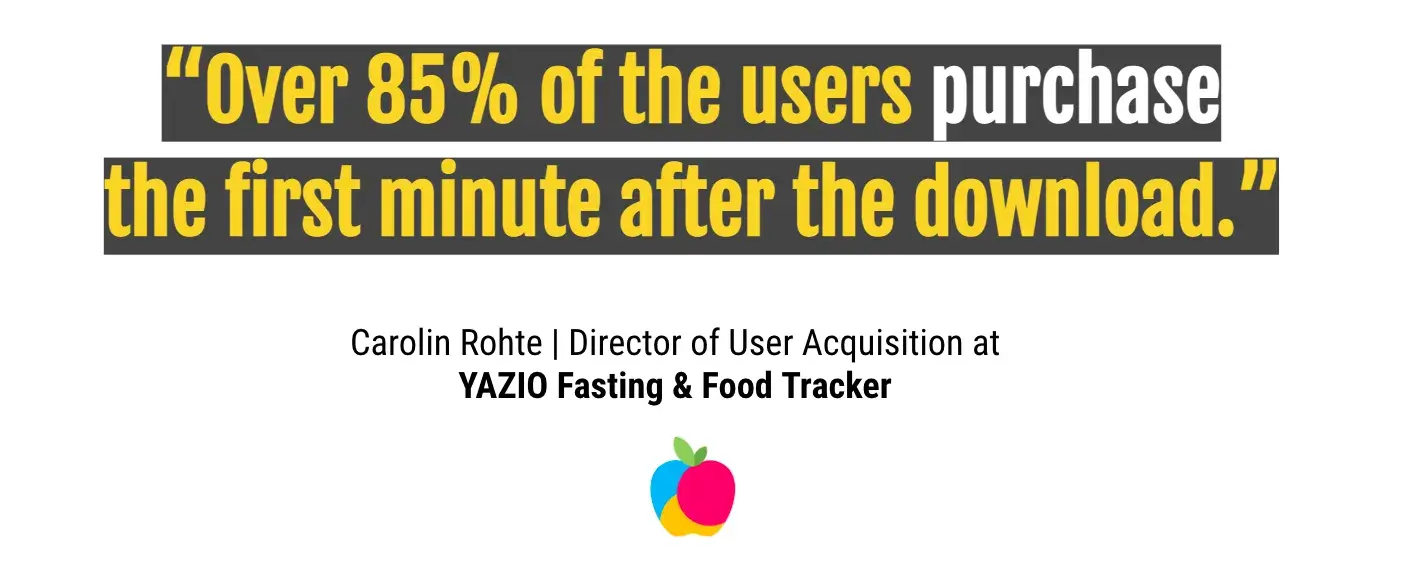
This is not an isolated case, it’s actually the most common scenario for subscription-based apps.
For example, when we at AppAgent are consulting subscription apps in all kinds of different verticals (Education, Fitness, Health, Productivity, etc.), we face this pattern almost constantly.
Whether you offer a free trial or not, the situation does not differ. According to Mobile Growth Consultant Thomas Petit, “It’s normal that around 50-75% of trials start the first day. In some cases, it’s even 90%. There are some exceptions, but those usually monetize the worst long-term”.
When do the Majority of Subscriptions Occur?
A study published by Liftoff in 2017 affirms that on average, it takes 3 hours for a user to convert to a subscription after the installation of the app. After that, the situation does not change much.
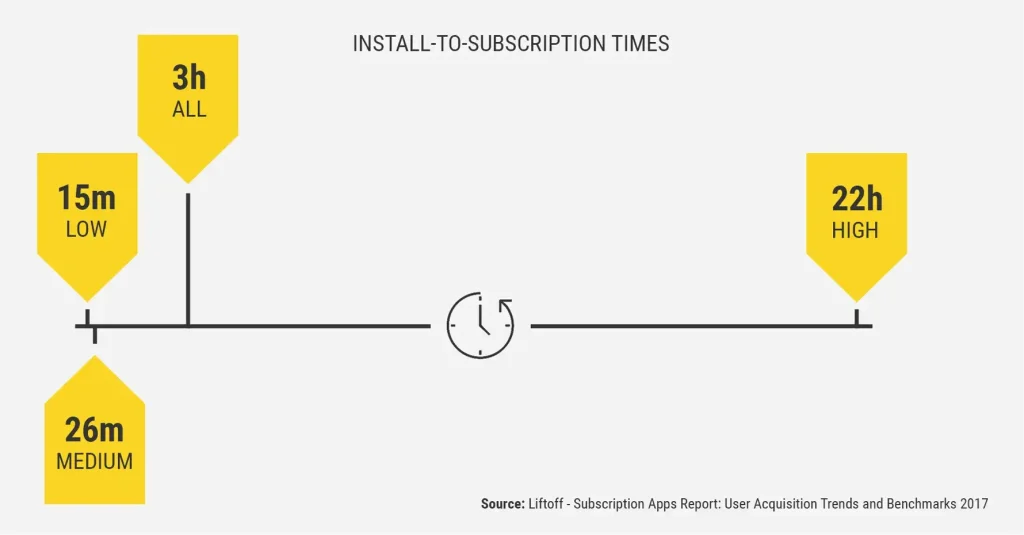
Another interesting insight of the report is the relation between Install-to-Subscription time and the price of subscription. Charging a MEDIUM price actually delays the Install-to-Subscription time by only 11 minutes (vs LOW price). Even for apps with a HIGH subscription price, the initial decision to subscribe happens within 24 hours.
Our Recommendation
What’s happening in your subscription app? Check your payment distribution. Do you have 70%+ of payment happening on day zero? Don’t miss the day-zero opportunity, it could be your last chance to convert users.
If you’re not there yet, review whether or not you’re showing the paywall enough. If you don’t show the paywall to new users (before/after the onboarding, or even in both places) for example, you are missing a huge opportunity. Right after installation, the user has high intent and a seemingly good predisposition to commit to the app.
Three Tips for Improving your Conversion Rate
Going in a bit more tactical direction, we would like to provide you with three concrete tips on how to actually get more people to subscribe on day one.
Tip #1: Onboarding and Paywall Testing are a Must!
The fact that A/B testing is important is no secret, but what might not be so obvious are these three points below:
A.) Enable Testing
The faster you can test, the faster you can fail and learn, and the faster you can find what really moves the needle. As we saw above, improving the Conversion Rate from Installs to Subscriptions can have a game-changing impact on your business.
There are many tools out there that can help you test and analyze the results of onboarding and paywall. Ensure that your team is properly set to test in the most efficient way.
In the same way, ensure that the user continues to have the best and smoothest experience possible, especially when they are about to pay. We normally recommend Purchasely (a lot of paywall templates to test, just plug and play) or Adapty (fast API for paywall rendering and remote config in the way of a JSON table. Very interesting their Mobile paywall screen collection to find inspiration – image below).
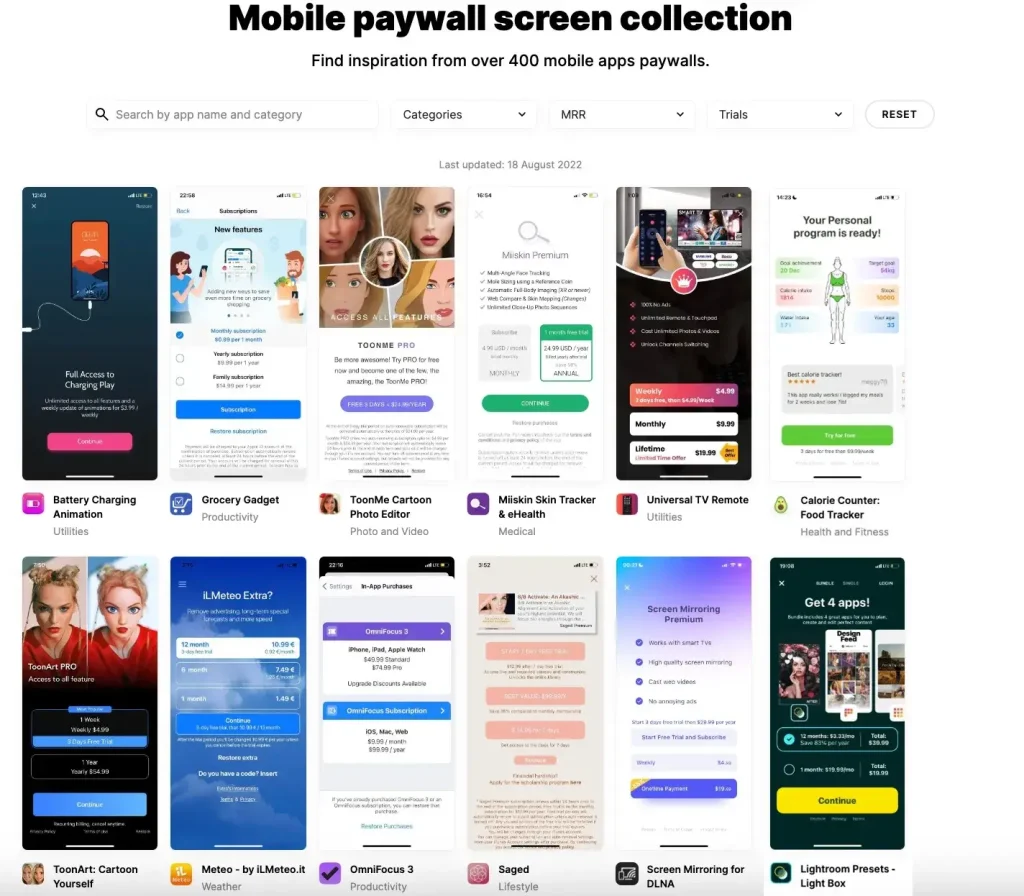
B.) Be Good at Testing
You want to make the right decisions. Are you taking the long period into account? What’s going to be the impact of your tests on renewals and long-term retention? Is the test even statistically significant? A an interesting tool you might want to use/know on this topic is the one below available at AB Testguide. Ensure that your team has a good understanding of these topics.
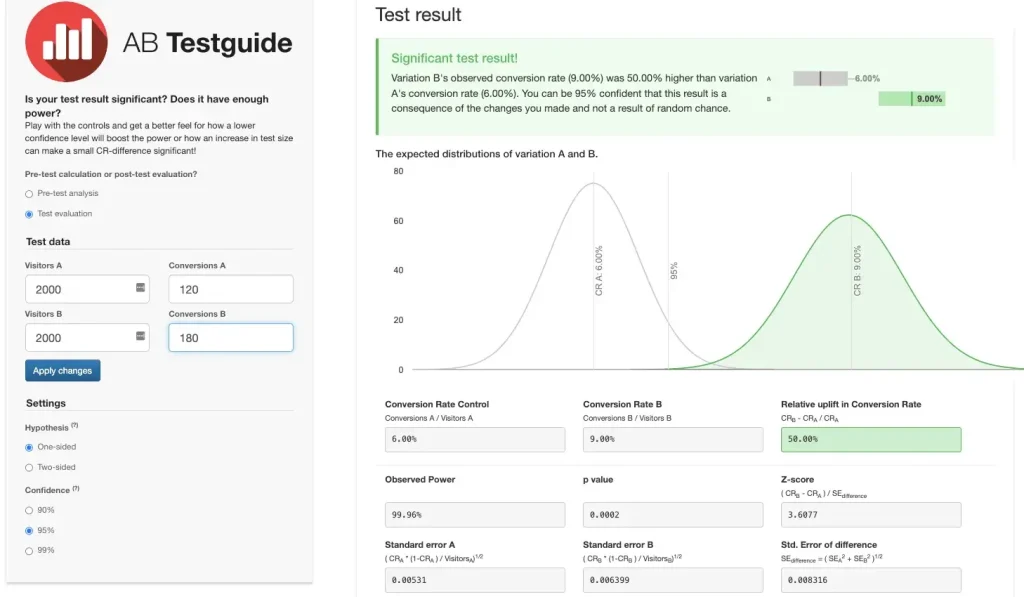
A product analytic tool can help a lot here. Check Amplitude, for example. This tool is probably the best solution out there to understand user behavior inside your app. They have a very convenient Startup package that can help you start out for the first year.
C.) Be Brave if needed
A lesson we learned from bold startup entrepreneurs is that sometimes you need to take risks. Many startups that are looking for Product-market fit are fighting to achieve their next round of investment. They don’t have the time to invest in sophisticated tests. Moreover, sometimes they don’t even have the volume (installs) to support proper A/B testing.
In these cases, you need to build your best hypotheses that explain why the user will convert better if you make certain changes, group the changes in your next app version, and simply test it.
If you are testing onboarding and paywall, the impact will be pretty much on new users, so you won’t affect your baseline. If something is not going in the right direction you can simply work on a new version. Don’t freeze, and don’t stop testing. With a good conversion rate that boosts your ROAS to a positive range, you can start increasing your paid media spending.
Tip #2: Be Consistent with your USP and Continue to Pitch it All the Time
Prepare the user’s state of mind before the paywall. The motivation is there, and the predisposition to pay is there as well. Let’s reinforce the user’s conviction that they’re making the right choice.
How? You can test the Fastic: Intermittent Fasting app approach. This famous app in the Health & Fitness category uses two specific types of screen inside its onboarding:
A.) Loading Screen
The loading screen is actually a series of images that arrive after the initial part of the onboarding. At this point, the user has already shared a lot of information. The Fastic app uses UI elements to give the idea that they are at work on creating a personalized plan for the user.
While the user is waiting, the app remarks its USP (Unique Selling Proposition) and distinctive value points. In the preview below, we collected three of the screens displayed to the users.
B.) Pre-Paywall Screen
This second screen type is placed right before the paywall. One step more? How this can help conversion? The idea behind it is to bring positive friction and FOMO (fear of missing out).
On this screen, Fastic features a resume of all of the information collected during the onboarding. They show how the personalized plan is finally ready to be used. The users are therefore informed about what they will get from and how the app will help them reach their final goal in the estimated time.
Below you can see the sequence of the three loading screens and one pre-paywall screen that the users will experience at the end of the onboarding, right before hitting on the paywall.
Please note how Fastic’s USP (they currently use “Healthy Fasting for reliable results” in the store assets) is always present and distilled in many forms and placements.

Tip #3: Balance Onboarding Conversion Rate vs Paywall Conversion Rate
At AppAgent, we see many different cases where the number of people that completed the onboarding for a subscription app was very high (e.g. 95% plus). The Paywall Conversion Rate, on the contrary, was way below the expected average for apps in the same category.
What about slightly reducing the Onboarding Conversion Rate but simultaneously improving the Paywall Conversion Rate?
For example, you can test a longer version of the onboarding (short vs long onboarding). Fewer people may complete the onboarding steps, but the bet here is that you will have more time to convince people about the ability your app has to really change their habits. What you care about is having a positive impact on the final Installs to Subscription conversion rate.
Conclusion
We’ve covered both parts of the term “profitably scale” and, hopefully, managed to provide you with some strategic and tactical advice on how to increase your chances of making it past the traction and transition growth phases.
Below you can find a summary of the main takeaways from both Part One and Part Two of this article:
- If you want to scale, you need a strong USP that is working together with your positioning.
- Most of the time, there is a day-zero opportunity…take it!
- Be good and especially brave (if needed) when testing onboarding and paywall.
- Pitch your USP constantly and balance user psychology to keep the willingness to pay high.
If you’re looking for help growing your subscription app business or if you simply want more info, please feel free to shoot me an email at roberto@appagent.com.
For more information on the topic, check out this webinar featuring me and Independent Growth Consultant Thomas Petit:
